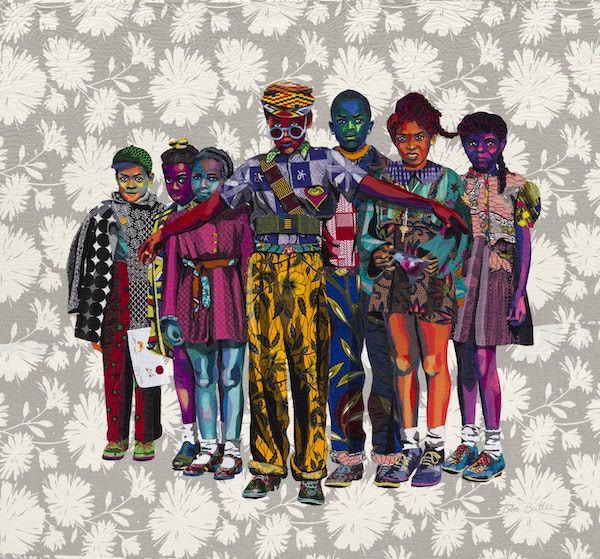What the hysteria over critical race theory is really all about

In 2019, there were just four mentions of critical race theory on Fox News. This year, in the past three-and-a-half months alone, it’s been mentioned 1,300 times. Why the sudden increase? It’s part of a concerted effort to demonize CRT – and any teaching on race or racism.
Fabiola Cineas for Vox:
In March, [Christopher F.] Rufo, the man who spearheaded much of the outcry, declared a victory on Twitter: “We have successfully frozen their brand — ‘critical race theory’ — into the public conversation and are steadily driving up negative perceptions. We will eventually turn it toxic, as we put all of the various cultural insanities under that brand category.”
Rufo didn’t say more than he meant there. He’s forthcoming about creating conflict around CRT from scratch.
Concerned parents and teachers have appeared on Fox News programs speaking out against the evils of CRT. In spite of how the campaign against it started, if everyday Americans like your neighbors Bill and Susie down the street are worried about critical race theory, you should be concerned too, right?
Matt Gertz for Media Matters:
Nearly a dozen of the Fox News guests the network has presented as concerned parents or educators who oppose the teaching of so-called “critical race theory” in schools also have day jobs as Republican strategists, conservative think-tankers, or right-wing media personalities, according to a Media Matters review.
It’s all made up. None of it’s sincere, but we shouldn’t be too surprised. Fake outrage is on the first page of the GOP handbook.
Cineas again, on what’s really going on:
The less people understand an issue, the more leeway there is for the GOP to gin up controversy, as Gomez points out. What the fight against critical race theory really shows is how Republicans are threatened by the progress that has been made with respect to racial justice and are uncomfortable with what it might actually look like to confront and eradicate racism.
Why Is Ethiopia at War With Itself?
The New York Times:
The conflict in the northern Tigray region, where Prime Minister Abiy Ahmed launched an offensive in November, has led to thousands of deaths, displaced 1.7 million people, and led to charges of atrocities like ethnic cleansing and horrific sexual violence, mostly committed by government forces and their allies.
In June a senior U.N. official declared that parts of Tigray were in the throes of a famine — the world’s worst since 250,000 Somalis died in 2011.
Vox also has an excellent explainer video on why Ahmed attacked a state within his own country — less than a year after winning the Nobel Peace Prize.
Tobe Nwigwe on his music, the industry, and fatherhood

Miles Marshall Lewis profiles Nwigwe for Ebony:
What moved Tobe Nwigwe from dominating his own self-professed niche as an indie MC to achieving even greater mainstream recognition was the viral YouTube views of last year’s “I Need You To (Breonna Taylor).” He’d already performed an NPR Tiny Desk Concert in 2019 and been added to Michelle Obama’s playlist in January 2020. But his 44-second demand for the arrest of Breonna Taylor’s killers last July—retweeted by Diddy, LeBron James, and more—caught the attention of the Black Lives Matter movement and its allies, landing him his first two placements on Billboard’s genre sales charts.
Required viewing: Tiny Desk Concert, Try Jesus, I Need You Too (Breonna Taylor)
Why Coalition, Not Allyship, Is the Necessary Next Step in the Racial Justice Movement

Time’s Suyin Haynes speaks with academic Emma Dabiri about her new book What White People Can Do Next:
HAYNES: You call today’s anti-racists “abolitionists of the twenty-first century.” Why?
DABIRI: Some years ago, I was researching the transatlantic slave trade and abolitionist movement and was looking at the attitudes that were prevalent amongst many abolitionists. They were still racist, in that they saw Black people as inferior. The key difference between them and slaveholders was they didn’t think Black people should be enslaved—they thought they should be protected. There’s a very paternalistic attitude there, and there’s a strong trajectory from that to white saviourism that I think runs through into allyship.
Misunderstood Composer Julius Eastman’s ‘Femenine’ Gets a Fresh Take
Tom Huizenga for NPR:
It’s only in recent years that friends and scholars have begun slowly shedding light on Eastman’s music and the blurry details of his final, erratic years — and that a newer generation of musicians has given his work a fresh look. Among those is the Los Angeles-based ensemble Wild Up, which has just released a singularly jubilant performance of Eastman’s 1974 work Femenine (pronounced feh-meh-NEEN), a mesmerizing 67-minute groove that unfolds one beautiful moment after another.
Find it wherever you listen to music. It really is mesmerizing.
A Day at the Museum With the Obama Portraits, Basquiat, and Bisa Butler

Adrienne Gibbs, writing for Zora:
Now, this is a day at the museum that I can actually enjoy with both friends and family. Living people. Art that sizzles and invites conversation. Acknowledgment of my culture. Acknowledgment of other folks’ cultures as well.
Also, this is the main point: Wiley, Sherald, Basquiat, and Butler all in the same art museum, at the same time, in prominent front-and-center spaces, and it wasn’t even Black History Month.
The Obama portraits and Butler’s portrait quilts are on display at the Art Institute of Chicago through August 15 and September 6, respectively.
Butler also recently created a stunning quilt for the cover of Essence.
A Brief History of ‘The Dap’
Jessica Moulite for The Root:
Even a simple handshake in the literal hands of Black folks becomes a vessel for flyness, authenticity and cultural solidarity.
The genesis of the dap:
Black soldiers serving in Vietnam created the “dap,” which stands for dignity and pride, in the face of “prejudiced commanders or NCOs” as “manifestations of solidarity occurred frequently throughout the military and were an important assertion of social identity for black GIs.”
Thanks for reading. See you next week.
